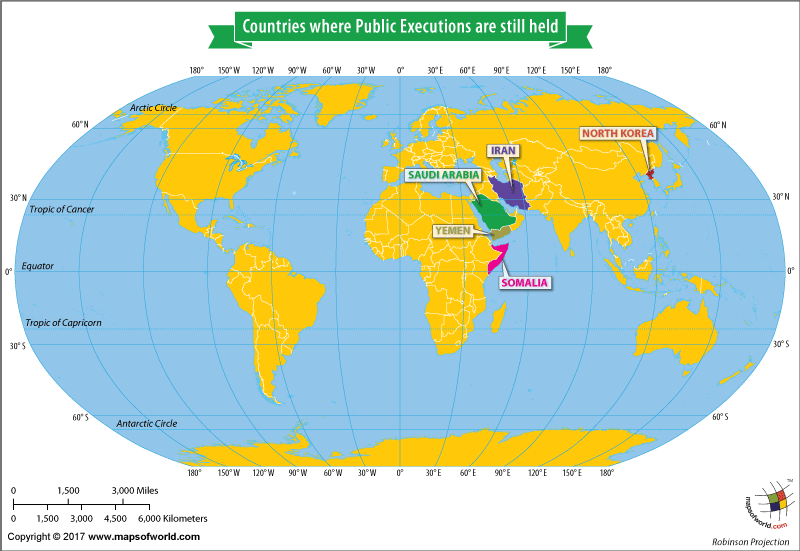What countries practice public executions?
In a few countries, executions are still practiced as a method of deterrent. Some countries perform these executions in public places for all to witness.
Use of state-sponsored public execution as capital punishment, is reported to be active in; North Korea, Iran, Saudi Arabia, Somalia, and Yemen. The practice has been condemned by several human rights organizations, including the United Nations Human Rights Committee, as to be ‘incompatible to human dignity,’
Historically, public executions have been attended by large crowds of people, and there is much detail that can be found around the world, through-out history.
In 1868, England banned the practice, and in parts of the US, it continued to take place until the 1930’s. In latter half of the 20th century, many human rights agencies urged governments across the world to re-look at even capital punishments, and do away with the practice.
North Korea is infamous for carrying out public executions, but what is reported in the media is pale compared to reality. The South Korea funded ‘Korean Institute for National Unification,’ in its annual white paper on human rights, revealed that between 2000 and 2013, 1,382 executions took place in public in North Korea. There have been reports of an increase after 2013. The state media, however, reported only two public executions in 2014, and none in 2015, according to investigation by Cornell University’s ‘Death Penalty Worldwide,’ research group. In late 2013, a South Korean Daily reported that North Koreans were forced to attend public executions by firing squad held in stadiums, the first known large scale public executions under Kim Jung Un.
Amnesty International’s latest report states that at least 33 public executions were carried out in Iran in 2016. Death sentences in Iran are usually given for crimes such as murder, rape, homosexuality, and drug-related offences. Hanging is usually done early in the morning, at sunrise, and often at the location of the crime, or in a city center. Also, under Iran’s Sharia Law, the victim’s family holds the right to pardon the convict from execution, for infractions such as a death caused by an automobile accident. As a result, it’s not uncommon to see a ‘convict’s’ family pleading with the ‘victim’s’ family for a pardon.
Saudi Arabia is also known to carry out public executions. In the year 2010, it reportedly carried out at least 27 executions. In Saudi Arabia, the most common method for public executions, is beheading by sword.
Reports have also emerged of public executions being carried out in Yemen, with 53 executions reported in 2010. Firing squad is the most common method, but stoning and beheading are also possible.
In Somalia, the death penalty is legal. Somalia is mostly lawless, and executions are carried out by state and non-state actors. In 2012, a man convicted of being an al-Shadab member was executed by a firing squad. Al Shadab also carries out such executions in areas under its control. It was reported, a crowd that included children, saw this execution that was held at a city police academy.
Amnesty International, in its 2016 Report, notes that 1,032 people were publicly executed across 23 countries. In 2015, the number of public executions was 1,634, in 25 countries, the highest since records were kept.
Today, most executions are said to take place in China, Iran, Saudi Arabia, Iraq, and Pakistan. But the ability to report the exact numbers of public executions is very difficult, as most governments keep these numbers under tight control, and in some countries, they are considered state secrets.
Know more:
Related maps:





